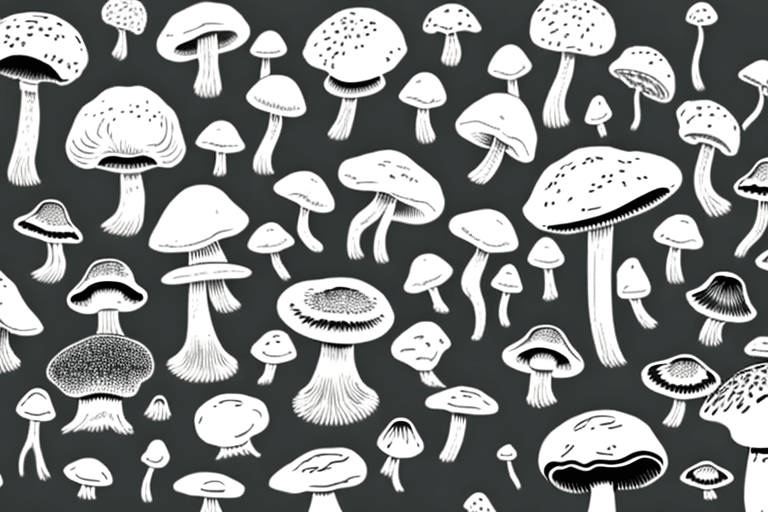Polysaccharides, a type of carbohydrate, are a critical component of functional mushrooms. They are complex carbohydrates made up of sugar molecules and are known for their health benefits. This article will delve into the intricate details of polysaccharides found in functional mushrooms, their structure, types, and health benefits.
Functional mushrooms are a group of fungi that have been used for centuries in traditional medicine for their health-promoting properties. They contain a variety of bioactive compounds, including polysaccharides, which contribute to their medicinal and nutritional value. This article will provide an in-depth understanding of the role of polysaccharides in functional mushrooms.
Understanding Polysaccharides
Polysaccharides are complex carbohydrates that are made up of long chains of monosaccharides or simple sugars. They are a primary source of dietary fiber and play a crucial role in human health and nutrition. They are found in a variety of foods, including fruits, vegetables, grains, and functional mushrooms.
The structure of polysaccharides is complex and varies widely. They can be linear or branched, and their monosaccharide units can be the same (homopolysaccharides) or different (heteropolysaccharides). The properties and functions of polysaccharides depend on their structure and the types of sugar units they contain.
Types of Polysaccharides
There are several types of polysaccharides, each with its unique structure and function. Some of the most common types include cellulose, starch, glycogen, and chitin. In functional mushrooms, the most prevalent polysaccharides are beta-glucans and chitin.
Beta-glucans are a type of polysaccharide that has been extensively studied for their immune-modulating effects. They are found in the cell walls of bacteria, fungi, yeasts, algae, lichens, and plants. In functional mushrooms, beta-glucans are the primary bioactive compound responsible for their health benefits.
Structure and Function of Polysaccharides
The structure of polysaccharides is determined by the type of sugar units they contain and the way these units are linked together. For instance, cellulose is a linear polysaccharide made up of glucose units linked by beta-glycosidic bonds, while starch is a branched polysaccharide made up of glucose units linked by alpha-glycosidic bonds.
The function of polysaccharides depends on their structure. For example, cellulose provides structural support to plant cells, while starch serves as a storage form of energy in plants. In functional mushrooms, polysaccharides such as beta-glucans and chitin contribute to their structural integrity and have various health-promoting effects.
Polysaccharides in Functional Mushrooms
Functional mushrooms are rich in polysaccharides, particularly beta-glucans. These polysaccharides are found in the cell walls of mushrooms and are responsible for many of their health benefits. The content and composition of polysaccharides in mushrooms can vary depending on the species, growth conditions, and extraction methods.
Polysaccharides from functional mushrooms have been shown to have immune-modulating, anti-cancer, anti-inflammatory, anti-oxidant, and anti-viral effects. They can also improve gut health, support cardiovascular health, and enhance cognitive function. The health benefits of mushroom polysaccharides are primarily attributed to their ability to modulate the immune system and their antioxidant activity.
Extraction of Polysaccharides from Mushrooms
Polysaccharides are extracted from mushrooms using various methods, including hot water extraction, ethanol extraction, and enzymatic extraction. The extraction method can significantly affect the yield and composition of the extracted polysaccharides. Hot water extraction is the most common method used due to its simplicity and efficiency.
After extraction, the polysaccharides are often purified and characterized to determine their structure and composition. This information is crucial for understanding the bioactivity of the polysaccharides and their potential health benefits.
Health Benefits of Mushroom Polysaccharides
Research has shown that polysaccharides from functional mushrooms have a wide range of health benefits. They can modulate the immune system, inhibit the growth of cancer cells, reduce inflammation, protect against oxidative stress, and improve gut health. These health benefits are primarily attributed to the beta-glucans in the mushrooms.
For instance, polysaccharides from Reishi mushrooms have been shown to stimulate the immune system and inhibit the growth of cancer cells. Polysaccharides from Lion's Mane mushrooms can enhance cognitive function and protect against neurodegenerative diseases. Polysaccharides from Turkey Tail mushrooms can support gut health and have anti-cancer effects.
Conclusion
Polysaccharides are a critical component of functional mushrooms, contributing to their structural integrity and health-promoting effects. They are complex carbohydrates that can modulate the immune system, inhibit cancer growth, reduce inflammation, and improve gut health. The health benefits of mushroom polysaccharides are primarily attributed to the beta-glucans in the mushrooms.
Understanding the structure, function, and health benefits of polysaccharides in functional mushrooms can help us appreciate their value in our diet and health. As research continues to uncover the potential of these remarkable fungi, the use of functional mushrooms for health and wellness is expected to grow.

